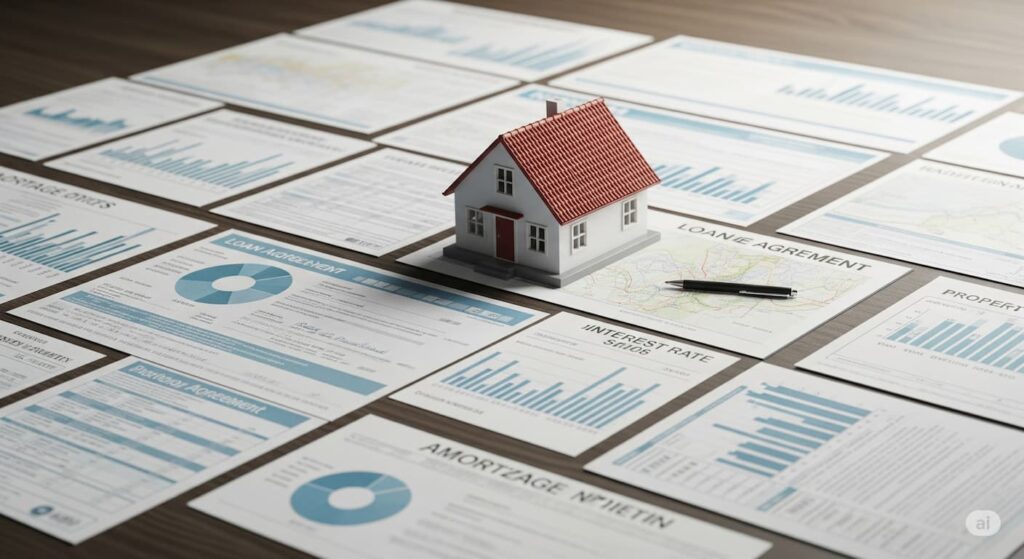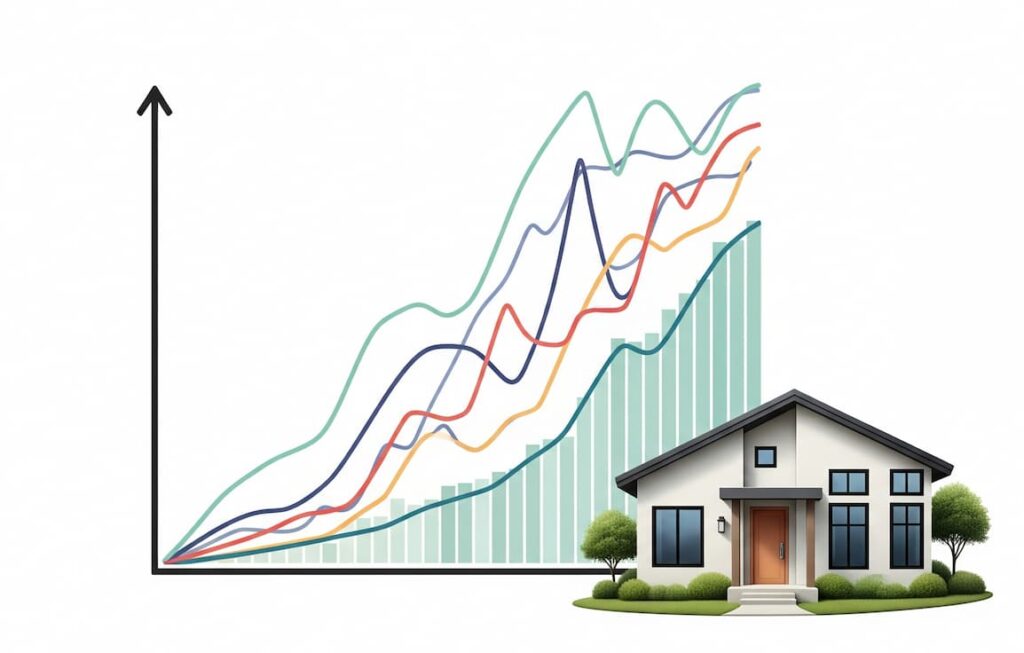- 1. Understanding the Mortgage Landscape in 2025: What’s New and Why It Matters
- 2. Fixed-Rate vs. Adjustable-Rate Mortgages: Key Differences Explained
- 3. Top Fixed-Rate Mortgage Products for 2025: Rates, Terms, and Trends
- 4. Adjustable-Rate Mortgages (ARMs): Who Should Consider Them in 2025?
- 5. Government-Backed Mortgages: FHA, VA, and USDA Loans Compared
- 6. Jumbo Mortgages in 2025: Are They Right for High-Income Borrowers?
- 7. Specialty Mortgage Products: Green Loans, Interest-Only, and More
- 8. First-Time Homebuyer Mortgages: Best Programs, Incentives, and Grants
- 9. Refinance Mortgage Products: Cash-Out, Rate-and-Term, and Streamline Options
- 10. Comparing Mortgage Rates, Terms, and Features: A 2025 Snapshot Table
- 11. How to Choose the Right Mortgage for Your Financial Goals in 2025
- 12. Frequently Asked Questions (FAQs) About Mortgages in 2025
- What credit score do I need to get approved for a mortgage in 2025?
- How much down payment is required for a mortgage?
- Is it better to get a fixed-rate or adjustable-rate mortgage?
- Can I refinance my mortgage if rates go down?
- What are the closing costs, and how much should I expect to pay?
- How do I improve my chances of mortgage approval?
- Are there special mortgage programs for first-time buyers?
- 13. Resources and External Links for Mortgage Information in 2025
1. Understanding the Mortgage Landscape in 2025: What’s New and Why It Matters
If you’re considering buying a home or refinancing in 2025, you’re entering a mortgage market shaped by economic shifts, digital innovation, and changing borrower expectations. So, what’s different this year—and why should you care?
Let’s break it down in simple terms.
The 2025 Mortgage Market: A Quick Snapshot
Compared to previous years, the mortgage scene in 2025 is defined by:
- Stabilizing interest rates after years of fluctuation
- Tighter lending standards following regulatory updates
- Increased use of fintech and AI in loan processing
- New loan products designed for gig workers, green homes, and first-time buyers
Homebuyers are more tech-savvy, lenders are more cautious, and product diversity is greater than ever.
Are Mortgage Rates Going Up or Down in 2025?
As of early 2025:
- Fixed mortgage rates have moderated, hovering between 5.75%–6.25% on average
- Adjustable-rate mortgages (ARMs) are seeing a comeback as buyers look for flexibility
- Government-backed loans (FHA, VA) are offering slightly lower rates for eligible borrowers
Tip: Even a small change in rate (0.25%) can impact your monthly payments and total interest significantly.
Technology Is Reshaping the Home Loan Experience
Thanks to AI and automation, applying for a mortgage is faster and easier than ever:
- Pre-approval within minutes through apps like Rocket Mortgage and Better.com
- Digital underwriting reduces paperwork and speeds up approvals
- Smart comparison tools help borrowers find the best lender for their situation
Still, choosing the right mortgage product requires human judgment—especially when it comes to long-term financial planning.
Why Choosing the Right Mortgage Matters in 2025
With home prices still high in many U.S. markets and rates likely to remain steady, your choice of mortgage can make a huge difference in:
- Monthly affordability
- Total interest paid
- How fast you build equity
- Flexibility if your financial situation changes
2. Fixed-Rate vs. Adjustable-Rate Mortgages: Key Differences Explained
When exploring mortgage options in 2025, one of the first decisions you’ll face is whether to choose a fixed-rate or an adjustable-rate mortgage (ARM). Each offers distinct advantages depending on your financial goals, risk tolerance, and how long you plan to stay in your home.
Let’s simplify the differences so you can make a smart, confident decision.
What Is a Fixed-Rate Mortgage?
A fixed-rate mortgage has one key feature: your interest rate stays the same for the entire loan term (typically 15, 20, or 30 years). That means your monthly principal and interest payments never change—offering predictability and peace of mind.
Best for homeowners who:
- Want stable, consistent payments
- Plan to stay in their home long term
- Expect interest rates to rise in the future
What Is an Adjustable-Rate Mortgage (ARM)?
An ARM starts with a fixed rate for a set period (e.g., 5, 7, or 10 years), then adjusts periodically based on a market index.
Example: A 5/1 ARM has a fixed rate for 5 years, then adjusts every 1 year after that.
Best for homeowners who:
- Expect to move or refinance within a few years
- Want a lower starting rate than a fixed mortgage
- Are comfortable with rate fluctuations
Quick Comparison Table
| Feature | Fixed-Rate Mortgage | Adjustable-Rate Mortgage (ARM) |
| Interest Rate | Constant for loan term | Starts low, then adjusts |
| Monthly Payment | Always the same | May rise or fall over time |
| Rate Predictability | High | Low after intro period |
| Long-Term Cost | Often higher | Can be lower—if rates stay low |
| Popular In | Stable or rising rate markets | Declining or short-term scenarios |
How to Choose Between Fixed and Adjustable
Ask yourself:
- How long will I live in the home? (Short-term = ARM might save you money)
- Do I need budget stability? (Fixed rate gives peace of mind)
- Can I handle payment changes in the future? (ARM requires financial flexibility)
In 2025, with rates expected to remain steady or gently fall, ARMs may offer short-term savings—but fixed-rate loans provide long-term security.

3. Top Fixed-Rate Mortgage Products for 2025: Rates, Terms, and Trends
Fixed-rate mortgages remain the most popular choice among U.S. homeowners—and for good reason. They offer stability, predictability, and are widely available across lenders in 2025. But not all fixed-rate loans are the same.
Let’s explore the most common fixed-rate mortgage options, what’s trending this year, and how to decide which one suits your needs best.
30-Year Fixed Mortgage: The Long-Term Standard
Overview:
The 30-year fixed-rate mortgage remains the go-to choice for most homebuyers thanks to its affordability and extended repayment period.
2025 Avg. Rate: 6.00% – 6.25%
Best for: First-time buyers, families, or anyone seeking lower monthly payments
Benefits:
- Predictable monthly costs
- Spreads payments over time
- Easier to qualify for
Drawbacks:
- Higher total interest paid over time
- Slower equity build-up
15-Year Fixed Mortgage: For Faster Equity and Interest Savings
Overview:
This loan allows borrowers to pay off their mortgage faster while saving significantly on total interest.
2025 Avg. Rate: 5.25% – 5.50%
Best for: Buyers with strong income who want to build equity quickly and pay less in interest
Benefits:
- Lower interest rate than 30-year
- Pay off your home in half the time
- Build equity faster
Drawbacks:
- Higher monthly payments
- May stretch your budget
20-Year and 25-Year Fixed Mortgages: The Flexible Middle Ground
Overview:
Less common, but ideal for those looking to balance monthly affordability with interest savings.
2025 Avg. Rate: Similar to 15-year rates, depending on lender
Best for: Homeowners who can pay more monthly but don’t want the full cost of a 15-year term
Benefits:
- Reduced interest vs. 30-year
- More manageable payments than 15-year
- Great for refinancing
Comparison Table: Fixed-Rate Loan Options in 2025
| Loan Term | Avg. Rate (2025) | Monthly Payment | Total Interest (est.) | Best For |
| 15-Year | 5.25% | High | Lowest | Fast payoff, equity building |
| 20-Year | 5.40% | Medium | Lower than 30-year | Balance of term and savings |
| 30-Year | 6.00% | Low | Highest | Affordability, new buyers |
Example based on $300,000 loan with good credit
Fixed-Rate Mortgage Trends to Watch in 2025
- Lenders offering 40-year fixed loans (more flexible but with higher total cost)
- Green mortgage options for energy-efficient homes with reduced rates
- Digital lenders like Better.com and SoFi offering faster approvals and cashback incentives
4. Adjustable-Rate Mortgages (ARMs): Who Should Consider Them in 2025?
Adjustable-rate mortgages (ARMs) are making a quiet comeback in 2025—especially among savvy borrowers looking to capitalize on lower introductory rates and short-term affordability. But are they right for you?
Let’s break down how ARMs work, who they’re best suited for, and what’s new this year.
What Is an ARM and How Does It Work?
An ARM is a home loan with a fixed interest rate for an initial period, followed by periodic rate adjustments based on a benchmark index like the SOFR (Secured Overnight Financing Rate).
Example:
- A 5/1 ARM means:
- First 5 years = fixed rate
- After that = adjusts every 1 year
Why Choose an ARM in 2025?
In today’s market, ARMs often start 0.50% to 1.00% lower than comparable fixed-rate loans. That can mean thousands in savings during the initial term.
Best for:
- Buyers who plan to sell or refinance within 5–10 years
- High-income earners who expect future income growth
- Investors or second-home buyers
ARM Options You’ll See in 2025
| ARM Type | Intro Period | Common Use | 2025 Avg. Starting Rate |
| 5/1 ARM | 5 years fixed | First-time buyers, short stays | 5.50% – 5.75% |
| 7/1 ARM | 7 years fixed | Mid-term homeowners | 5.75% – 6.00% |
| 10/1 ARM | 10 years fixed | Long-term planners, refinancers | 6.00% – 6.25% |
The longer the fixed term, the higher the initial rate—but with more payment stability.
Risks to Consider with ARMs
- Your payment may increase significantly after the fixed period
- Rate caps exist, but your final rate could still exceed expectations
- Harder to budget long term compared to fixed-rate loans
Is an ARM Right for You? Ask These Questions
- Do you plan to move or refinance before the fixed term ends?
- Can you handle a potential rate increase in the future?
- Are you comfortable with some financial uncertainty in exchange for lower upfront costs?
If yes, an ARM could be a strategic money-saver in 2025.
5. Government-Backed Mortgages: FHA, VA, and USDA Loans Compared
Not all mortgages come from private lenders. Government-backed home loans are popular in 2025 for offering low down payments, flexible credit requirements, and built-in protections—especially for first-time buyers and underserved areas.
Let’s compare the three major types: FHA, VA, and USDA mortgages.
1. FHA Loans (Federal Housing Administration)
Best for: First-time buyers or those with lower credit scores
Down Payment: As low as 3.5%
Credit Score Requirement: Typically 580+
Loan Limits: Set by county
Mortgage Insurance: Required (MIP, even after 20% equity)
2025 Avg. Rate: 5.85% (often slightly lower than conventional)
Why choose FHA?
- Easier to qualify with less-than-perfect credit
- Low upfront and monthly cost for those without 20% down
- Available across all U.S. states
2. VA Loans (U.S. Department of Veterans Affairs)
Best for: Active military, veterans, or eligible surviving spouses
Down Payment: 0% required
Credit Score Requirement: Typically 620+, varies by lender
Loan Limits: No formal cap in 2025 (based on entitlement)
Mortgage Insurance: None required
2025 Avg. Rate: 5.50%
Why choose VA?
- No down payment or mortgage insurance
- Competitive interest rates
- Flexible debt-to-income ratios
VA loans are often the most cost-effective option for those who qualify.
3. USDA Loans (U.S. Department of Agriculture)
Best for: Buyers in eligible rural or suburban areas
Down Payment: 0% required
Credit Score Requirement: Usually 640+
Loan Limits: Based on area median income
Mortgage Insurance: Annual guarantee fee
2025 Avg. Rate: 5.65%
Why choose USDA?
- Ideal for low-to-moderate-income households
- Zero down and low mortgage insurance
- Promotes affordable homeownership in rural America
Use the USDA eligibility map to check if your desired area qualifies.
Comparison Table: FHA vs VA vs USDA Loans
| Feature | FHA | VA | USDA |
| Down Payment | 3.5% | 0% | 0% |
| Credit Score | 580+ | 620+ (varies) | 640+ |
| Mortgage Insurance | Yes (MIP) | No | Yes (guarantee fee) |
| Income Limits | No | No | Yes |
| Area Restrictions | No | No | Yes (rural/suburban only) |
| Best For | First-time buyers | Veterans and military | Rural, lower-income buyers |
How to Apply for Government Loans in 2025
- FHA: Through any FHA-approved lender
- VA: With a Certificate of Eligibility (COE) and VA-approved lender
- USDA: Via USDA lenders; pre-check area eligibility online
6. Jumbo Mortgages in 2025: Are They Right for High-Income Borrowers?
As home prices continue to rise—especially in major metro areas—more borrowers are turning to jumbo mortgages to finance properties that exceed conventional loan limits. But jumbo loans come with their own set of qualifications, risks, and rewards.
Let’s break down what you need to know in 2025.
What Is a Jumbo Mortgage?
A jumbo mortgage is a home loan that exceeds the conforming loan limits set by the Federal Housing Finance Agency (FHFA).
2025 Conforming Loan Limits:
- $750,000 for most U.S. counties
- Up to $1,125,000 in high-cost areas (e.g., NYC, San Francisco, Seattle)
Any mortgage above these thresholds is considered non-conforming and must be issued by private lenders—not backed by Fannie Mae or Freddie Mac.
Key Features of Jumbo Loans
- Loan Amounts: Often between $750,000 to $3 million+
- Down Payment Requirements: Typically 10%–20%, sometimes higher
- Credit Score Needs: Usually 700+
- Income Documentation: Detailed verification, including tax returns, W-2s, and assets
- Interest Rates: Slightly higher than conforming loans (e.g., 6.50%–7.00% in 2025)
Who Should Consider a Jumbo Loan?
Jumbo mortgages are ideal for:
- Affluent borrowers buying high-value primary or vacation homes
- Self-employed professionals with strong but non-traditional income
- Investors or executives purchasing in high-cost real estate markets
Pros and Cons of Jumbo Mortgages
| Pros | Cons |
| Access to high-value properties | Stricter credit and income requirements |
| Potential for interest-only or flexible terms | Higher down payments and closing costs |
| No private mortgage insurance (PMI) required | May take longer to process and approve |
Top Jumbo Mortgage Lenders in 2025
- Chase – Great for relationship discounts and high-income borrowers
- Bank of America – Offers customized jumbo solutions
- SoFi – Ideal for tech professionals and modern underwriting
- Wells Fargo – Known for financing luxury and multi-million-dollar homes
7. Specialty Mortgage Products: Green Loans, Interest-Only, and More
Beyond traditional fixed and adjustable-rate loans, 2025 offers a growing list of specialty mortgage products—tailored to unique borrower needs such as sustainable housing, income flexibility, or investment strategy.
If you’re a freelancer, eco-conscious buyer, or investor, these lesser-known mortgage types might be your best fit.
Green Mortgages (Energy-Efficient Home Loans)
What it is:
Green mortgages—also called Energy Efficient Mortgages (EEMs)—allow buyers to finance energy upgrades or qualify for better rates when purchasing an energy-efficient home.
Benefits:
- Lower interest rates or loan premiums
- May help qualify for a higher loan amount
- Reduce utility bills through upgrades like solar panels or insulation
Available through: FHA, VA, and some conventional lenders (ask about EEM programs)
Perfect for new builds, eco-upgrades, or buyers targeting LEED-certified properties.
Bank Statement Loans (Alt-Doc Mortgages)
What it is:
For self-employed borrowers or gig workers who don’t have traditional W-2s, bank statement loans allow qualification based on 12–24 months of deposit history, rather than tax returns.
Best for: Freelancers, small business owners, consultants
Key Requirements:
- Strong credit score (680+)
- Proof of consistent deposits and reserves
- Higher interest rate vs. traditional loans
Interest-Only Mortgages
What it is:
With these loans, you pay only the interest for a set period (usually 5–10 years), then begin paying principal + interest.
Best for:
- Investors or high-income borrowers with irregular income
- Short-term homeowners
- Those seeking low initial monthly payments
Be aware: Payments rise significantly after the interest-only period ends.
Balloon Mortgages
What it is:
You make low payments for a few years, followed by a large lump sum payment (the “balloon”) at the end of the term.
Best for:
- Short-term buyers
- Investors flipping or reselling properties
- Borrowers with expected income growth
Risky if you’re not prepared to refinance or sell before the balloon payment hits.
Community Development and State-Level Specialty Programs
Many U.S. states offer unique programs for:
- First responders
- Teachers
- Low-income families
- First-generation homebuyers
Examples: CalHFA in California, Texas State Affordable Housing Corp., and Florida Housing Finance Corp.
Tip: Visit your state’s housing authority website to explore tailored programs.
Should You Consider a Specialty Mortgage?
Ask yourself:
- Do you need non-traditional documentation?
- Is sustainability a priority in your homebuying journey?
- Will you sell or refinance before the loan resets?
If yes, specialty mortgage products may offer lower barriers to entry or financial flexibility compared to traditional options.

8. First-Time Homebuyer Mortgages: Best Programs, Incentives, and Grants
Buying your first home is a big step—and in 2025, it’s easier than ever thanks to tailored mortgage products, down payment assistance programs, and federal/state-level grants designed just for first-time buyers.
Here’s a breakdown of the most valuable options and how to qualify.
Who Qualifies as a First-Time Homebuyer?
According to the U.S. Department of Housing and Urban Development (HUD), a first-time buyer is anyone who:
- Hasn’t owned a home in the last 3 years
- Is a single parent or displaced homemaker who owned with a spouse
- Is buying a property for the first time in the U.S.
Top Mortgage Options for First-Time Buyers (2025)
| Mortgage Type | Down Payment | Min. Credit Score | Perks |
| FHA Loan | 3.5% | 580+ | Easy credit standards, low down payment |
| VA Loan | 0% | 620+ (varies) | No PMI, great for veterans & military |
| USDA Loan | 0% | 640+ | No down payment for rural homes |
| HomeReady (Fannie Mae) | 3% | 620+ | Income-based eligibility, low PMI |
| Home Possible (Freddie Mac) | 3% | 660+ | Flexible funding sources, good for roommates/income sharing |
Federal Programs and Grants in 2025
- First-Time Homebuyer Tax Credit:
Up to $15,000 in refundable federal tax credits (proposed in 2025 legislation) - HUD Down Payment Assistance Programs:
Search your ZIP code on hud.gov for local funding - Good Neighbor Next Door Program:
50% discount on homes for teachers, firefighters, police, and EMTs
State & Local Programs to Explore
Many states offer matching grants, second mortgages, or outright assistance for first-time buyers. Examples include:
- CalHFA (California): MyHome Assistance Program
- Texas: My First Texas Home
- New York: SONYMA Achieving the Dream Program
- Florida: FL Assist Down Payment Assistance
Tip: Visit your state housing finance authority for updated 2025 incentives.
How to Boost Your Chances of Approval as a First-Time Buyer
- Improve your credit score (aim for 680+)
- Get pre-approved before house hunting
- Keep debt-to-income ratio under 43%
- Take a homebuyer education course (some grants require this)
9. Refinance Mortgage Products: Cash-Out, Rate-and-Term, and Streamline Options
Whether you’re aiming to lower your monthly payments, tap into home equity, or switch to a better loan, 2025 offers a range of refinancing products to help you meet your goals. But each type comes with specific requirements, benefits, and risks.
Let’s explore the main types of refinance mortgages available today and how to choose the right one.
1. Rate-and-Term Refinance
What it is:
This is the most common type of refinancing, where you change the interest rate, the term (length), or both—without borrowing additional money.
Best for:
- Lowering your interest rate
- Switching from a 30-year to a 15-year loan (or vice versa)
- Moving from an ARM to a fixed-rate loan
Benefits in 2025:
- Potential to save thousands in interest
- Lower monthly payments or faster payoff
- May be available with minimal closing costs
2. Cash-Out Refinance
What it is:
You refinance for a larger loan than you currently owe, and take the difference in cash—typically for home improvements, debt consolidation, or big purchases.
Requirements:
- Usually 20%+ home equity required
- Solid credit (680+ recommended)
- May come with a slightly higher interest rate
Best for:
- Homeowners with significant equity
- Those seeking lump-sum access to capital
- Borrowers who want to consolidate high-interest debt
3. Streamline Refinance (FHA, VA, USDA)
What it is:
A simplified refinance program for borrowers with existing government-backed loans (no appraisal or income verification required in most cases).
Types:
- FHA Streamline: For FHA loans
- VA IRRRL: For VA loans
- USDA Streamlined Assist: For USDA borrowers
Benefits:
- Fast and easy process
- Low or no out-of-pocket costs
- No new credit or income review (in many cases)
Refinance Product Comparison Table (2025)
| Refinance Type | Cash Back | Appraisal Required? | Best For |
| Rate-and-Term | ❌ | ✅ Usually | Lowering interest rate or term |
| Cash-Out | ✅ | ✅ Yes | Accessing equity for cash needs |
| FHA/VA/USDA Streamline | ❌ | ❌ Often waived | Fast refinance for gov-backed loans |
When Should You Refinance in 2025?
- Your current rate is 1%+ higher than market rates
- Your credit score has improved since your last mortgage
- You want to change loan types or shorten your term
- You need cash for major expenses and have built equity
10. Comparing Mortgage Rates, Terms, and Features: A 2025 Snapshot Table
To help you quickly grasp the differences between popular mortgage products this year, here’s a side-by-side comparison highlighting key features, rates, and who each loan is best for.
| Mortgage Type | Avg. Interest Rate (2025) | Loan Term Options | Down Payment | Credit Score Requirement | Best For |
| 30-Year Fixed | 6.00% – 6.25% | 30 years | 3% – 20% | 620+ | Buyers seeking stability and lower monthly payments |
| 15-Year Fixed | 5.25% – 5.50% | 15 years | 3% – 20% | 640+ | Those wanting to pay off their mortgage faster |
| 5/1 Adjustable-Rate Mortgage (ARM) | 5.50% – 5.75% | 5 years fixed, then adjusts annually | 5% – 20% | 620+ | Short-term homeowners or those expecting income growth |
| FHA Loan | 5.85% | 15 or 30 years | 3.5% | 580+ | First-time buyers or lower credit score borrowers |
| VA Loan | 5.50% | 15 or 30 years | 0% | 620+ | Military veterans and eligible spouses |
| USDA Loan | 5.65% | 30 years | 0% | 640+ | Buyers in eligible rural or suburban areas |
| Jumbo Loan | 6.50% – 7.00% | 15, 20, 30 years | 10% – 20% | 700+ | High-value homebuyers in expensive markets |
How to Use This Table
- Consider your budget and how much you can afford for a down payment.
- Think about how long you plan to stay in your home—longer terms usually mean lower monthly payments but more interest.
- Match your credit score with the loan’s minimum requirements to improve approval chances.
- Review government-backed loans if you’re a first-time buyer or eligible veteran.
11. How to Choose the Right Mortgage for Your Financial Goals in 2025
Picking the perfect mortgage isn’t just about rates—it’s about matching your loan to your long-term financial plans, lifestyle, and risk tolerance. Here’s how to make an informed choice in 2025.
Step 1: Define Your Homeownership Timeline
- Planning to stay 5+ years? Fixed-rate loans provide payment stability and protect you from rising interest rates.
- Expect to move or refinance within a few years? Consider an ARM to benefit from lower initial rates.
Step 2: Assess Your Budget and Cash Flow
- Can you afford higher monthly payments to pay off your home faster? A 15-year fixed mortgage can save you thousands in interest.
- Need lower payments now? A 30-year fixed or an ARM might fit your budget better.
Step 3: Evaluate Your Risk Tolerance
- Do you prefer predictable payments, or are you comfortable with potential rate changes? Fixed rates offer peace of mind; ARMs involve some risk but can save money upfront.
Step 4: Factor in Your Credit Score and Down Payment
- Higher credit scores can unlock better rates and loan options.
- Larger down payments reduce your loan amount and may eliminate mortgage insurance.
Step 5: Consider Specialty and Government-Backed Loans
- Are you eligible for FHA, VA, or USDA loans? These often come with lower down payments and flexible credit criteria.
- Interested in sustainable living? Green loans can finance energy-efficient home improvements.
Step 6: Use Online Tools and Consult Experts
- Run affordability calculators to see monthly payment scenarios.
- Speak with mortgage brokers or financial advisors who understand your local market and goals.
12. Frequently Asked Questions (FAQs) About Mortgages in 2025
What credit score do I need to get approved for a mortgage in 2025?
Most lenders prefer a credit score of 620 or higher for conventional loans. Government-backed loans like FHA accept scores as low as 580, and some specialty programs may allow even lower scores.
How much down payment is required for a mortgage?
Down payments vary by loan type:
- Conventional loans typically require 3% to 20%
- FHA loans require as little as 3.5%
- VA and USDA loans often require 0% down
Is it better to get a fixed-rate or adjustable-rate mortgage?
It depends on your plans. Choose a fixed-rate mortgage for payment stability and long-term ownership, or an ARM if you plan to move or refinance within the fixed-rate period.
Can I refinance my mortgage if rates go down?
Yes! Refinancing can lower your interest rate or change your loan term. In 2025, look for rate-and-term or streamline refinance options to save money.
What are the closing costs, and how much should I expect to pay?
Closing costs typically range from 2% to 5% of the loan amount. These include lender fees, appraisal, title insurance, and escrow fees. Some lenders offer no-closing-cost loans but may charge higher interest rates.
How do I improve my chances of mortgage approval?
Maintain a good credit score, keep your debt-to-income ratio below 43%, save for a down payment, and provide complete documentation during your application.
Are there special mortgage programs for first-time buyers?
Yes. FHA, VA, USDA, and many state/local programs offer incentives like low down payments, grants, and tax credits designed to make homeownership more accessible.
13. Resources and External Links for Mortgage Information in 2025
To help you continue your mortgage journey with confidence, here are trusted resources and tools offering up-to-date information, calculators, and assistance programs:
Government and Official Websites
- U.S. Department of Housing and Urban Development (HUD):
https://www.hud.gov
Comprehensive resources on FHA loans, first-time buyer programs, and housing counseling. - Consumer Financial Protection Bureau (CFPB):
https://www.consumerfinance.gov
Mortgage guides, complaint assistance, and financial education. - Federal Housing Finance Agency (FHFA):
https://www.fhfa.gov
Updates on conforming loan limits and mortgage market trends.



